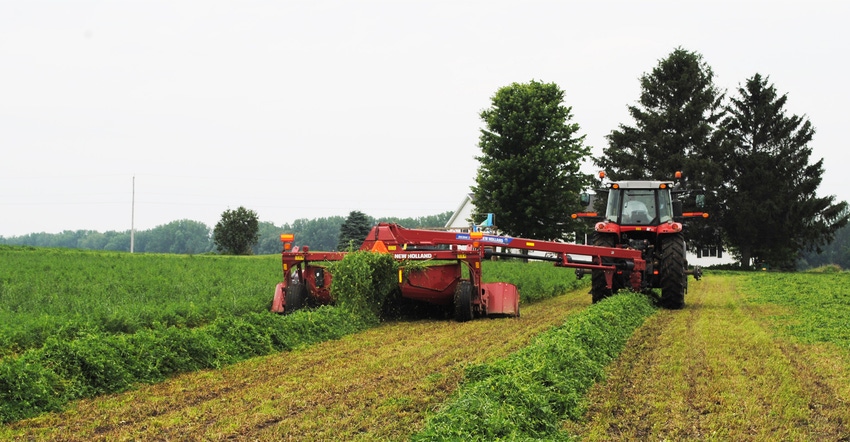
Forages are the most economical sources of nutrients for dairy cows, whether grown or purchased, according to dairy nutritionist David Casper, who spoke during a Knowledge Nook seminar at World Dairy Expo.
“Forage quality cannot be too good,” Casper said. “We can feed rations that are 65% to 70% forages when we have high-quality forages.”
Casper represents Ralco, makers of Anchor, a silage inoculant blend that rapidly lowers pH levels and locks in nutrients.
“Enhanced forage preservation of silage, haylage or high-moisture grain results in less dry matter loss, reduced heating and superior livestock performance,” Casper said.
The silage inoculant in Anchor is made up of micro-encapsulated granules that contain a proprietary blend of lactic-acid-producing bacteria.
“The outer layer of a granule seals it for storage and quickly dissolves for rapid rehydration,” Casper explained. “Enzymes make up the next layer and create additional food for the bacteria. Bacteria are surrounded by sugars that serve as an immediate food source.”
Feeding forages

“Ralco uses six bacteria in our microbials for silage, which drives efficient fermentation,” he said.
Casper said a cow’s rumen increases the fiber breakdown to get more energy out of feed.
“We are stimulating bugs on silage from fields and from Anchor,” he noted.
What can Anchor do to fermented forages?
“We’re saving the nutrients for the cow,” he said. “Anchor helps stabilize nutrients.”
According to Casper, Anchor inoculant is working even if you put your forages through a stress test during corn silage harvest.
“Anchor gives us less corn silage and haylage loss. It costs 57 cents per ton of corn silage,” Casper said. Anchor for hay costs $3.20 per ton of hay, according to Casper.
In a study, Anchor used as a hay preservative did not get a temperature rise.
“That means less heat damage to protein, and the RFV [relative feed value] was 30 points greater at the end of the study,” he said. “We really reduced the mold counts. The Anchor-treated hay had no mold growth.
Return on investment
“Anchor gives an 8-to-1 return on investment,” Casper said. “That works out to a $31 return on investment per ton of hay.”
Anchor is applied on the chopper for corn silage, and it goes on the baler as hay is being baled.
“It will not stick in the baler, it does not plug nozzles and there is no corrosion risk,” he said.
Anchor for silage is available in a 1-pound foil bag that treats 200 tons of fresh silage for typical application, a 1-pound foil bag that treats 500 tons of fresh silage for custom choppers and a 50-pound bag that treats 50 tons of fresh silage for dry application.
About the Author(s)
You May Also Like






